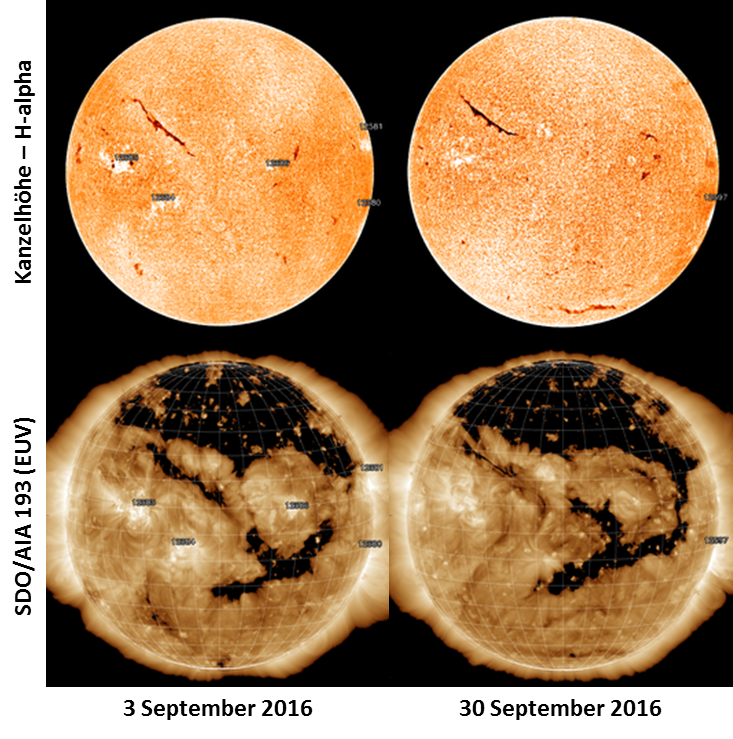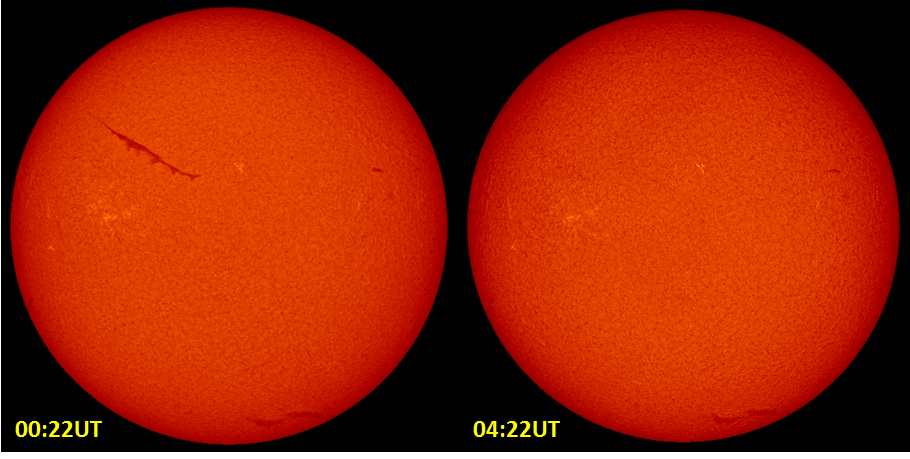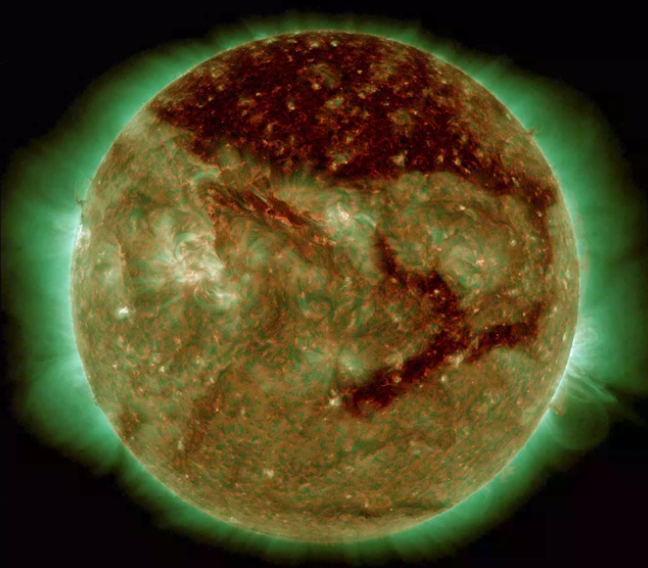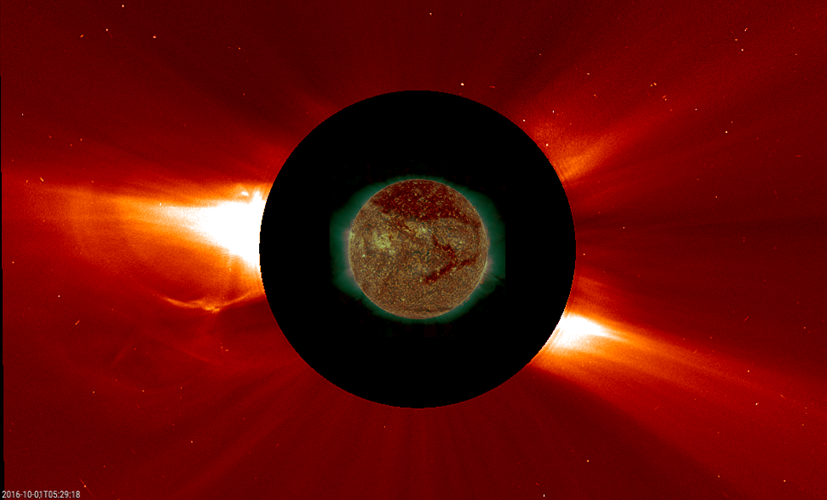A filament eruption took place early on 1 October (see movie). This filament had a respectable length of about 40 degrees, i.e. more than 10% of the solar circumference or well over the average Earth-Moon distance. The feature was already visible during the previous solar rotation early September, when it transited the solar disk uneventfully (see this news item).

Solar filaments are clouds of ionized gas above the solar surface squeezed between magnetic regions of opposite polarity. Being cooler and denser than the plasma underneath and their surroundings, they appear as dark lines when seen on the solar disk using special filters, such as Hydrogen-alpha (H-alpha; 656.28 nm). The image underneath was taken using such a filter by ground-based observatories of the GONG H-alpha Network. It shows the Sun on 1 October at 00:22UT (left) and only 4 hours later (right). In that relatively short time, the filament completely erupted and the "scar" in the northeast quadrant entirely disappeared.

Filaments are structures that only survive by the stability of the surrounding magnetic fields. In movies using H-alpha and extreme ultraviolet (EUV) filters, the northeast part can be seen to become unstable and start erupting around 01:15UT, taking with it the rest of the filament during the subsequent 2 hours. The northeast edge of the filament was the closest to the huge coronal hole (as seen in EUV: see SDO image underneath), so some interaction between the two is a possible cause for the eruption. No x-ray flare seems to have been associated with the event, as the sole flare during that time -a tiny B3.4 flare peaking at 02:19UT- was related to a small eruption near the Sun's northeast limb.

The SDO image above was taken at 04:30UT, showing a coronal dimming (also known as "transient coronal hole") near the location of the departed filament. This is indicative that plasma (charged particles) was ejected from the Sun into space puncturing a temporary hole in the Sun's atmosphere. Sure enough, SOHO's coronagraphs observed a coronal mass ejection (CME) billowing away from the Sun (image underneath), albeit at a moderate plane-of-the-sky speed of barely 300 km/s (CACTus). This CME was not directed to Earth.






